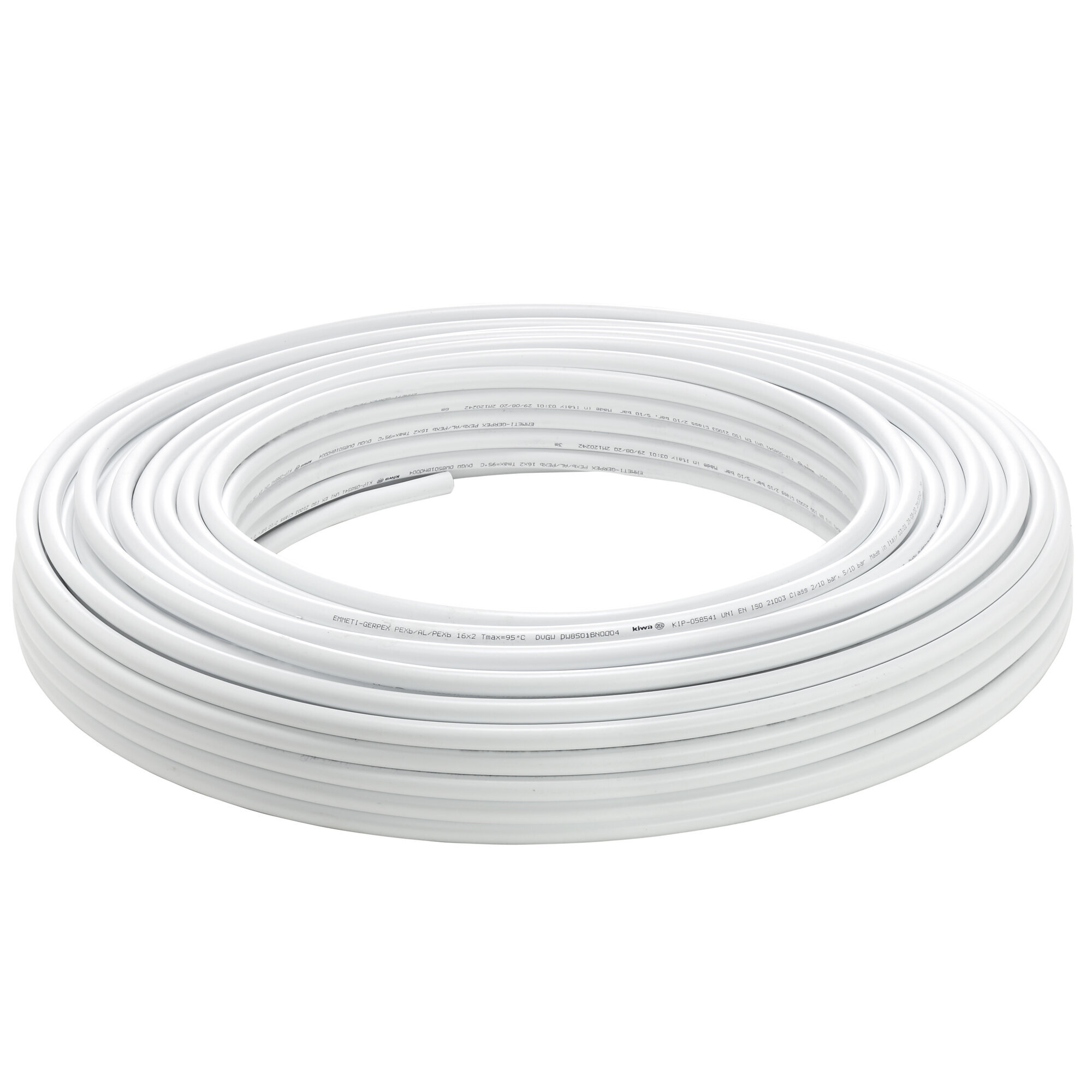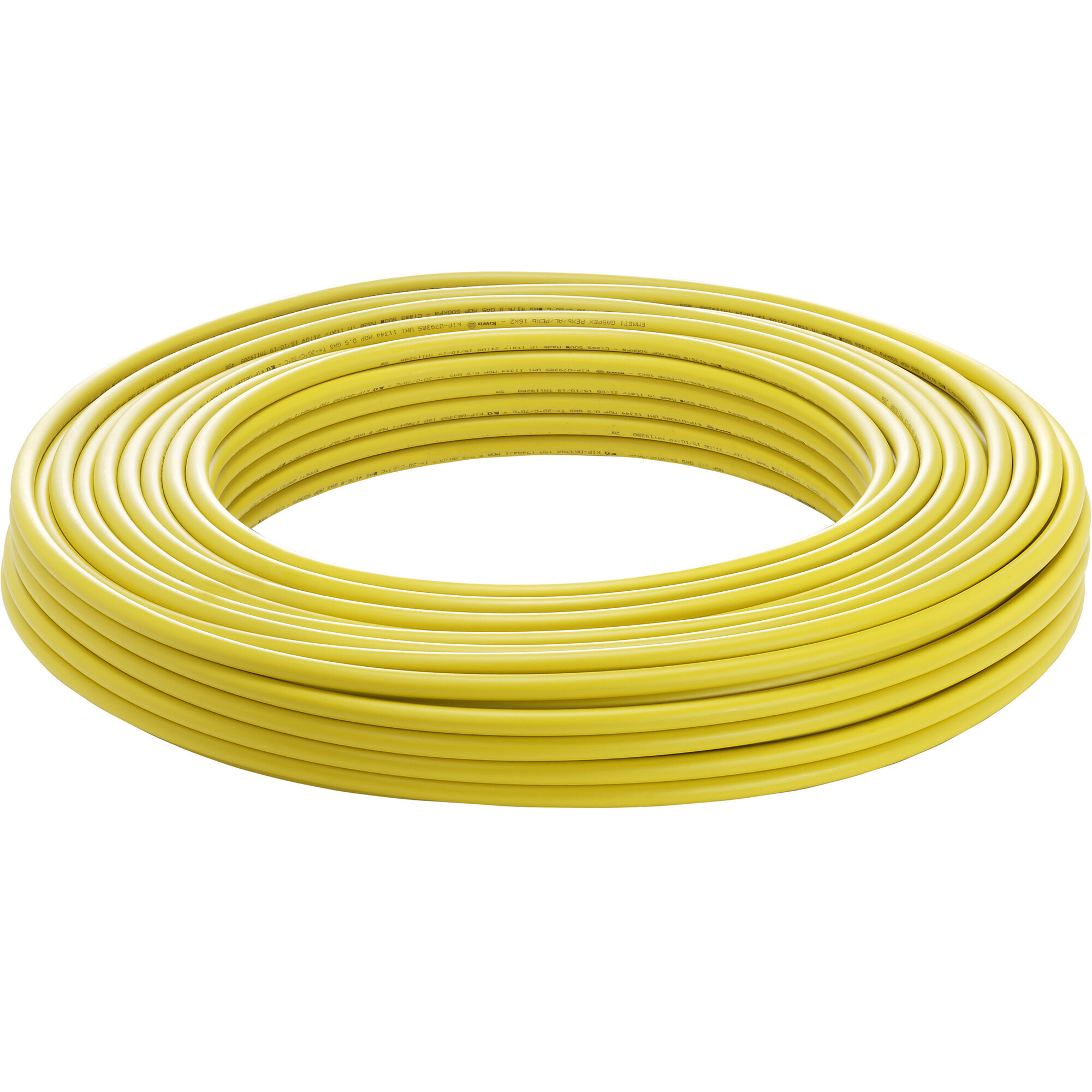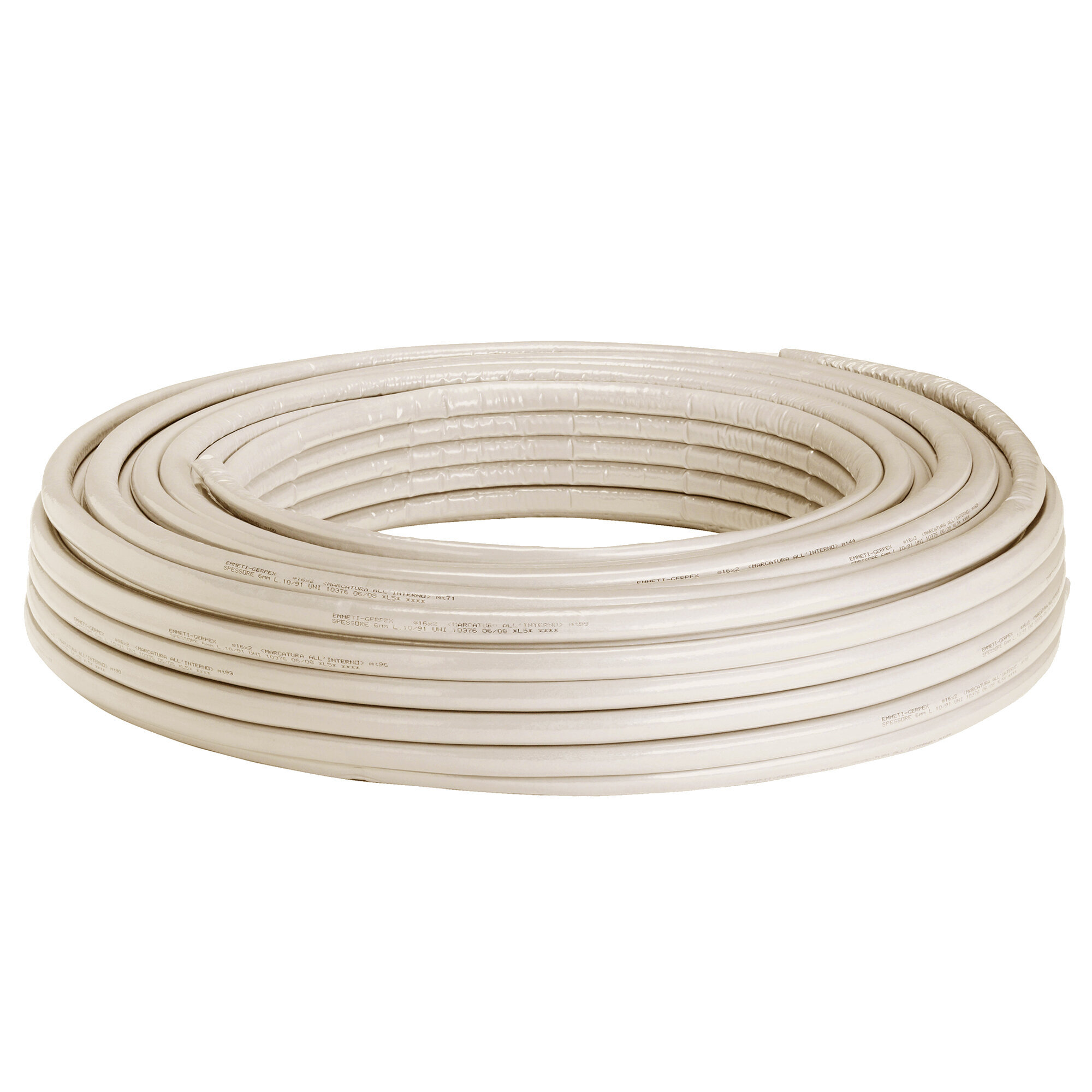Multilayer pipes offer remarkable mechanical properties, effectively withstanding high pressures and high operating temperatures-ideal for the construction of sanitary facilities.
Multilayer pipes are the ideal solution for conducting water in distribution, heating, and cooling systems.
Due to their structure, multilayer pipes offer remarkable mechanical properties, effectively resisting high pressures and high operating temperatures. In addition, they are distinguished by excellent corrosion resistance, minimal thermal expansion, impermeability to oxygen diffusion, and the ability to prevent scale formation.
The Multilayer Metal-Plastic Pipes for Thermal and Sanitary Installations

Multilayer M-pipes consist of layers of polymeric materials, with at least one metal layer. The last layer can be cross-linked polyethylene (PE-Xb) or thermal cross-linked polyethylene (PE-RT).
Emmeti's multilayer pipes are extremely flexible products that are resistant to pressure and temperature, as well as having low thermal expansion.
Gerpex and Gerpex RA are two types of multilayer pipes used for thermal sanitary systems. Made by a technologically advanced process, they combine a PE-Xb (cross-linked polyethylene) inner pipe with an aluminum core, with a minimum thickness of 0.3 mm for Gerpex and 0.2 mm for Gerpex RA. The metal core is welded to the pipe head and coated on the outside with an additional layer of PE-Xb.
Alpert multilayer pipes, on the other hand, are composed of combined layers of plastic and metal. The outer and inner layers consist of PE-X or PE-RT, and between them is a layer of aluminum, heat-welded.
The Multilayer Metal-Plastic Pipes for Gas Distribution Systems
In recent years, regulatory developments have allowed the use of multilayer pipes for domestic gas adduction systems as well.
Emmeti has created the Gaspex multilayer pipe, specially designed for gas adduction: a pipe made of PE-Xb (cross-linked polyethylene) with an aluminum core that is butt-welded. On the outside, it is coated with a layer of PE-Xb.
Gaspex is available in coils of various diameters, also coated with corrugated sheathing, and in rigid bars.

Plastic Multilayer Pipes for Heating and Plumbing Systems

Multilayer P-Pipes consist of more than one layer of polymeric material.
Each layer of the multilayer pipe has a specific characteristic: the polymeric layer provides nontoxicity, acoustic attenuation, light weight, and smoothness; the metallic layer offers corrosion, pressure, and temperature resistance, as well as minimal thermal expansion; and the vinyl (EVOH) layer creates an oxygen barrier.
Permissible polymeric materials for stressed layers, such as the first interior, include polybutylene (PB), high-temperature-resistant polyethylene (PE-RT), cross-linked polyethylene (PE-X), polypropylene (PP), and polyvinyl chloride (PVC-C).
The difference between Multilayer Pipes and Copper Pipes
Copper is known for its impact resistance and versatility in different types of piping. It can be easily bent, has high welding ability, and has excellent durability.
Polyethylene pipes, however, have been gradually replaced by the newer multilayer pipes.
Emmeti's multilayer pipes are made by special chemical processes that make the product structurally stronger and more heat-resistant. The polyethylene layers are coupled with an aluminum core, allowing the pipe to be bent by hand, avoiding the use of additional tools such as a pipe bender. The ease of bending multilayers over copper stems precisely from this feature.
In addition to this, the multilayer system offers good resistance to pressure and operating temperatures, along with increased corrosion resistance and impermeability to oxygen. The light weight and low cost of the material make it easy and advantageous to build a system using multilayer piping.




